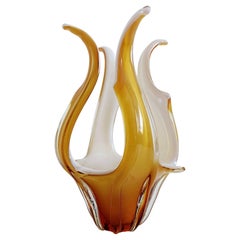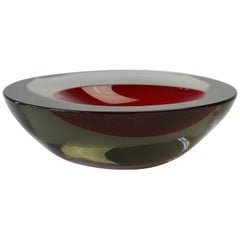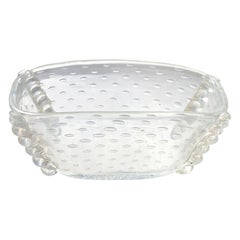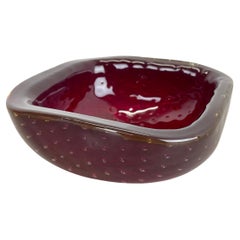Murano Glass Centerpieces
1960s Italian Mid-Century Modern Vintage Murano Glass Centerpieces
Glass, Art Glass, Blown Glass, Murano Glass, Opaline Glass
Mid-20th Century Italian Mid-Century Modern Murano Glass Centerpieces
Blown Glass, Murano Glass
Mid-20th Century Italian Mid-Century Modern Murano Glass Centerpieces
Blown Glass, Murano Glass
Mid-20th Century Italian Mid-Century Modern Murano Glass Centerpieces
Gold Leaf
Mid-20th Century Italian Mid-Century Modern Murano Glass Centerpieces
Gold Leaf
Late 20th Century Italian Mid-Century Modern Murano Glass Centerpieces
Murano Glass
1990s Italian Mid-Century Modern Murano Glass Centerpieces
Gold
Mid-20th Century Italian Mid-Century Modern Murano Glass Centerpieces
Art Glass, Blown Glass, Murano Glass, Ribbon, Glass
1970s Italian Arts and Crafts Vintage Murano Glass Centerpieces
Glass, Murano Glass
21st Century and Contemporary Italian Post-Modern Murano Glass Centerpieces
Murrine, Art Glass, Murano Glass
20th Century Italian Mid-Century Modern Murano Glass Centerpieces
Art Glass, Murano Glass
Mid-20th Century Italian Mid-Century Modern Murano Glass Centerpieces
Blown Glass, Murano Glass
1950s Italian Other Vintage Murano Glass Centerpieces
Murano Glass
Mid-20th Century Italian Mid-Century Modern Murano Glass Centerpieces
Art Glass, Blown Glass, Murano Glass, Glass, Sommerso
1930s Italian Art Deco Vintage Murano Glass Centerpieces
Murano Glass
1950s Italian Mid-Century Modern Vintage Murano Glass Centerpieces
Gold Leaf
Mid-20th Century Italian Mid-Century Modern Murano Glass Centerpieces
Gold Leaf
1980s Italian Mid-Century Modern Vintage Murano Glass Centerpieces
Murano Glass
21st Century and Contemporary Italian Modern Murano Glass Centerpieces
Murano Glass
1960s European Mid-Century Modern Vintage Murano Glass Centerpieces
Gold
Early 2000s Italian Modern Murano Glass Centerpieces
Gold
1940s Italian Art Deco Vintage Murano Glass Centerpieces
Gold
Mid-20th Century Italian Mid-Century Modern Murano Glass Centerpieces
Murano Glass
2010s Italian Modern Murano Glass Centerpieces
Art Glass, Murano Glass
1950s Italian Mid-Century Modern Vintage Murano Glass Centerpieces
Gold
Mid-20th Century Italian Mid-Century Modern Murano Glass Centerpieces
Glass, Art Glass, Blown Glass, Murano Glass, Opaline Glass
1990s Italian Modern Murano Glass Centerpieces
Gold
Late 20th Century Italian Mid-Century Modern Murano Glass Centerpieces
Gold
Late 20th Century Italian Mid-Century Modern Murano Glass Centerpieces
Murano Glass
Late 20th Century Italian Mid-Century Modern Murano Glass Centerpieces
Murano Glass
Mid-20th Century Italian Mid-Century Modern Murano Glass Centerpieces
Silver Leaf
1990s Italian Organic Modern Murano Glass Centerpieces
Art Glass, Murano Glass
1990s Italian Organic Modern Murano Glass Centerpieces
Art Glass, Murano Glass
Early 2000s Italian Post-Modern Murano Glass Centerpieces
Art Glass, Blown Glass, Murano Glass
1980s Italian Modern Vintage Murano Glass Centerpieces
Gold
2010s Italian Organic Modern Murano Glass Centerpieces
Murano Glass, Murrine
1950s Italian Mid-Century Modern Vintage Murano Glass Centerpieces
Murano Glass
1970s Italian Post-Modern Vintage Murano Glass Centerpieces
Murano Glass
1970s Italian Mid-Century Modern Vintage Murano Glass Centerpieces
Murano Glass
Mid-20th Century Italian Mid-Century Modern Murano Glass Centerpieces
Murano Glass
21st Century and Contemporary Italian Modern Murano Glass Centerpieces
Murano Glass
1970s Italian Mid-Century Modern Vintage Murano Glass Centerpieces
Murano Glass
Mid-20th Century Italian Mid-Century Modern Murano Glass Centerpieces
Art Glass, Glass, Blown Glass, Murano Glass
Late 20th Century Italian Mid-Century Modern Murano Glass Centerpieces
Murano Glass
Late 20th Century Italian Mid-Century Modern Murano Glass Centerpieces
Blown Glass, Murano Glass
Mid-20th Century Italian Mid-Century Modern Murano Glass Centerpieces
Blown Glass, Murano Glass
1960s Italian Mid-Century Modern Vintage Murano Glass Centerpieces
Murano Glass
1990s Italian Murano Glass Centerpieces
Murano Glass
Late 20th Century Italian Mid-Century Modern Murano Glass Centerpieces
Brass
1960s Italian Baroque Revival Vintage Murano Glass Centerpieces
Gold Leaf
1950s Italian Other Vintage Murano Glass Centerpieces
Murano Glass
1920s Italian Art Deco Vintage Murano Glass Centerpieces
Murano Glass
20th Century Italian Mid-Century Modern Murano Glass Centerpieces
Art Glass, Blown Glass, Murano Glass, Sommerso
1970s Italian Mid-Century Modern Vintage Murano Glass Centerpieces
Art Glass, Blown Glass, Murano Glass
Late 20th Century Italian Mid-Century Modern Murano Glass Centerpieces
Murano Glass
1970s Italian Mid-Century Modern Vintage Murano Glass Centerpieces
Metal
1950s Italian Mid-Century Modern Vintage Murano Glass Centerpieces
Murano Glass
Late 20th Century Italian Mid-Century Modern Murano Glass Centerpieces
Murano Glass
2010s Italian Organic Modern Murano Glass Centerpieces
Gold Leaf
Late 20th Century Italian Mid-Century Modern Murano Glass Centerpieces
Murano Glass





